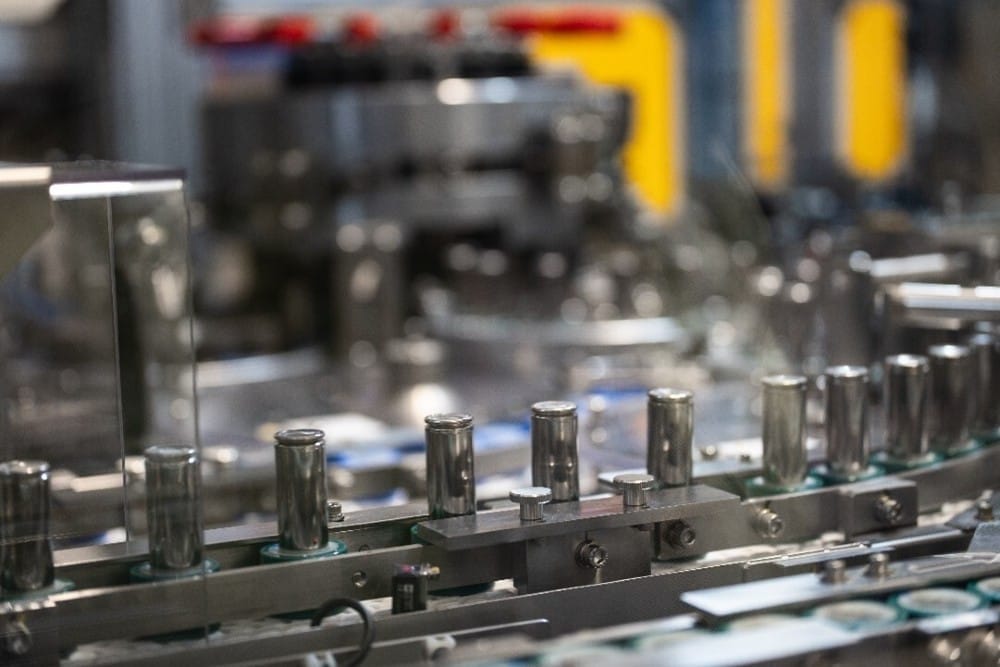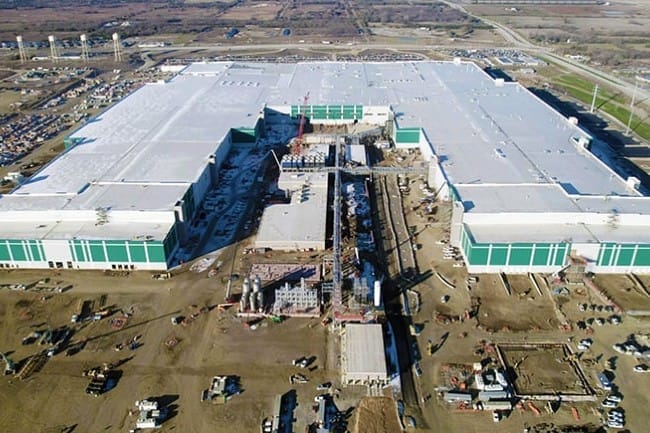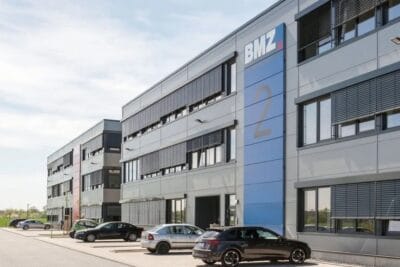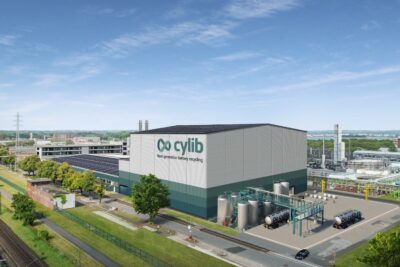Panasonic inaugurates its second battery plant in Kansas
At the official inauguration of its battery cell production plant in Kansas, Panasonic confirmed that it intends to realise an annual capacity of 32 GWh and create around 4,000 direct jobs there. The Japanese company began construction of the plant in autumn 2022 and has since invested around 4 billion dollars. The cylindrical cell format that rolls off the production line there is primarily used by Tesla, for example, in some versions of the Model 3 and Model Y. What’s more, these cylindrical cells are also produced in the jointly operated Gigafactory 1 in Nevada. These two factories are also the names of Panasonic’s current activities in the USA. In the meantime, there has been talk of a potential third factory. However, this potential project has gone quiet.
In any case, Panasonic is said to be stepping on the brakes internally: According to the Japanese newspaper Nikkei, the company has cancelled its long-standing goal of reaching a production capacity of 30 GWh per year in Kansas by the end of March 2027. Although the company is still aiming for this capacity, it is pushing back the target date, Nikkei wrote this week. The change of plan is related to the falling sales figures of Panasonic’s major customer, Tesla and the anti-electric car policies of US President Trump.
Panasonic leaves time horizon for scaling open
With the opening of series production in Kansas, industry experts are eagerly awaiting the new information from Panasonic’s press release, which states that the company is planning “an annual production capacity of approximately 32 GWh in the future.” Together with the existing 41 GWh in Nevada, capacity in the USA is therefore set to rise to 73 GWh. However, a time horizon for reaching this mark is no longer mentioned.

Panasonic announces more generally that it will continue to pursue a two-region model with activities in Japan and North America. With regard to production in Kansas, the company states that the experience gained from the first factory in Nevada has been incorporated into its construction. At the same time, Kansas is to introduce “labor-saving production lines, the Kansas Factory is expected to achieve approximately 20 per cent higher productivity compared to the Nevada Factory.” In the near future, Panasonic plans to introduce cells “using advanced materials that will increase cell capacity by around five percent.” With this in mind, Panasonic had already ordered silicon anodes from manufacturer Nexeon in 2023. At the beginning of 2024, Panasonic’s CEO also confirmed the targeted improvement of the 2170 cells. Panasonic’s lithium-ion cells currently have a volumetric energy density of 800 Wh/L.
Basis for long-term cooperation in the USA
For Kazuo Tadanobu, CEO of Panasonic Energy, the opening of the new factory represents a milestone in increasing the production of advanced batteries in the United States. “The opening of our Kansas Factory marks a major milestone in our journey to scale advanced battery production in the United States” However, Tadanobu is not forthcoming about what this long-term collaboration might look like. In any case, the CEO is not addressing rumours that first emerged in 2022 about additional production of 4680 cells for Tesla in the USA and possibly in Kansas. Tadanobu probably has enough to do at the moment to navigate through the current phase of economic uncertainty in the USA.
One thing is clear: Panasonic has not just recently started rethinking its global business. In mid-2024, the Group cancelled the schedule for expanding its global production capacities (in light of weaker demand in North America). The previously communicated target of 200 GWh of battery cells per year for 2031 is no longer tied to this target year. This was also reported by Nikkei just over a year ago, citing Panasonic CEO Kazuo Tadanobu. The target of 200 GWh worldwide is still being pursued, it was said at the time, but no longer at this point in time.
Tense market environment forces redirection
As early as 2024, Panasonic stated that the North American market for electric cars was still growing, but at a slower rate than expected. Mind you, this statement dates back to the Biden era, as current US President Trump was not re-elected until the end of 2024 and was inaugurated in January 2025.
Panasonic’s previously stated goals were to triple its global turnover to more than 3 trillion yen (19 billion US dollars) and quadruple its production capacity for electric car batteries to 200 gigawatt hours by the 2030 financial year, which ends in March 2031. The targets are now more modest. According to earlier media reports, Panasonic intends to weigh up investments in the USA and Japan more carefully in future in order to cushion the impact of the slump.
panasonic.com (PDF)





0 Comments